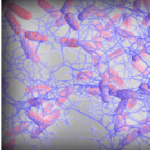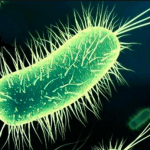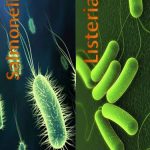fasdf@sadf.tu
Biofilm and food safety: What is important to know?
Part 1: What are Biofilms? In nature, most bacteria do not exist as suspended (planktonic-free floating) cells. Bacteria live in a group (mass of bacterial cells) attached to each other and to surfaces, in a biofilm form. A biofilm is as a complex community of microorganisms, embedded in self-created extracellular polymeric substances (EPS). Therefore, the biofilm is a microbial population adherent to each other and to surfaces or interfaces enclosed in the matrix. In this complex biofilm network of EPS, the bacterial cells perform less as individual cells and more as a collective living system, frequently creating channels to deliver...
fasdf@sadf.tu
Beef Products Recalled due to Possible E. coli O26 Contamination
The Recall The Department of Agriculture’s Food Safety and Inspection Service (FSIS-USDA ) announced that Good Food Concepts, LLC., a Colorado Springs, Colorado recalled 1,290 pounds of raw beef products, processed Aug. 3 and Aug. 4, 2017, due to potential contamination with E. coli O26. The contamination was discovered on Aug 5, 2017, by the company who had notified the FSIS inspection. A lot of carcasses received from Callicrate Ranch on July 31, 2017, were found to be contaminated with STEC (Shiga toxin producing E. coli) E. coli O26. Good Food Concepts company and FSIS are concerned that some beef may have...
fasdf@sadf.tu
FSMA and Pathogen Environmental Monitoring (PEM) Programs: Where are we?
Environmental monitoring is required under CFR 21 section 117.165 and under the FDA Final Rule for Preventive Controls for Human Food. Its purpose is to verify the implementation and effectiveness of the preventive controls put in place. Most food companies need to comply with these rules now or in the very near future. Purpose of the PEM Program The reason for having a PEM program is to identify problematic areas in the manufacturing facility where pathogens can harbor and become a source of contamination (“niches”), and assess the effectiveness of the sanitation programs. Environmental monitoring may include pathogens or indicator organisms, depending on the products...
fasdf@sadf.tu
Recalls and Outbreaks due to Food Pathogens: Is there a connection?
Most food recalls in the U.S. are due to Listeria Food Safety Tech has reported that in 2016 about 550 food products were recalled in the US. Of the recalled products, 275 were due to microbial contamination. Of the recalls, due to microbial contamination, 65% were due to Listeria monocytogenes. Salmonella accounted for 21% of the recalls, while E. coli accounted for only 3% of the recalls. As we reported, earlier this trend in continuing this year (More Recalls Caused by Fear of Listeria monocytogenes Contamination and In the last few days, (6/14-6/16) there have been several more recalls due to Listeria) with much more recalls due to Listeria. CDC...




